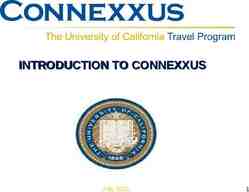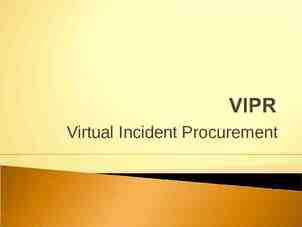Electronic Data Interchange (EDI) and SCM Define Electronic
20 Slides82.00 KB

Electronic Data Interchange (EDI) and SCM Define Electronic Data Interchange Give characteristics of EDI Discuss benefits of EDI, as well as barriers to its implementation Describe how EDIt works, and how it is moving to the Internet Contrast common (ANSI) EDI with Internet EDI Internet improvements to supply chain management

Electronic Data Interchange (EDI) Strategic Impact of EDI Definition of EDI Example of EDI How EDI works Benefits of EDI Direct and Process Barriers to EDI Adoption Advantages, Disadvantages and Characteristics of VANs EDI Implementation Model EDI migration to the internet

Strategic Impact of EDI Business processes can become more efficient Customer-supplier relationships may change more trust and collaboration Market structure changes

Definition of EDI The direct computer-to-computer transfer of business information between two businesses that uses a standard format. Focus on trade data interchange Often use VANs (Value-added networks) Use of standards

EDI Standards Companies speak precisely the same language Same codes in same places Proprietary codes -- to standards (X12, EDIFACT,X400) Different computers can communicate with one another

EDI Standards In 1968, the Transportation Data Coordination Committee was formed, charged with exploring ways to reduce the paperwork burden American National Standards Institute (ANSI): coordinating body for standards in the United States since 1918 Accredited Standards Committee X12 (ASC X12) chartered by ANSI in 1979 to develop EDI standards The current ASC X12 standard includes specifications for several hundred transaction sets

Types of EDI Benefits Direct Process require reengineering can only be realized with all trading partners are on EDI can revolutionize the way business is done

Barriers to Adoption Trading partners not knowing benefits Hardware costs Interfacing translator, software costs Need for software modifications Network (VAN) service charges Costs and effort for trading partner conversion

Trading Partner Concerns in EDI Implementation Benefits Costs EDI Trust Dependency

Value Added Networks Trading partners can implement the EDI network and EDI translation process in several ways, each using one of two basic approaches Direct connection Indirect connection

Direct Connection Between Trading Partners Requires each business in the network to operate its own on-site EDI translator computer EDI translator computers are connected to each other using modems or dedicated leased lines Trading partners using different protocols can make direct connection options difficult to implement

Indirect Connection Between Trading Partners Companies use the services of a valueadded network (VAN) The VAN provides communications equipment, software, and skills needed to receive, store, and forward electronic messages containing EDI transaction sets The VAN often supplies the software needed to connect to its services

Advantages of Using a Value Added Network Users support only one communications protocol The VAN records activity in an audit log, providing an independent record of transactions The VAN can provide translation between different transaction sets The VAN can perform automatic compliance checks to ensure the transaction set is in the specified EDI format

Disadvantages of Using a Value Added Network Most VANs require an enrollment fee, a monthly maintenance fee, and a transaction fee VANs can be cumbersome and expensive for companies with trading partners using different VANs Inter-VAN transfers do not always provide a clear audit trail

EDI on the Internet Viewed as a replacement for expensive leased lines and dial-up connections Small companies can get back in the game of selling to large customers the demanded EDI capabilities of their suppliers Concerns about security and lack of audit logs continue to be a major roadblock Takes advantage of open architecture

Comparison of EDI Standards EDI STANDARDS (ASC/ANSI) Security provided by private networks EFT (Electronic Funds Transmission) - standard for wire payments between client and vendor Transactions sets (810invoices;850, 855- POs) INTERNET STANDARDS SSL (Secure Sockets Layer) SET (Secure Electroic Transactions) protocol proposed by Visa/MC for Net No transaction standards

Current Internet EDI Usage Much EDI traffic carried over private networks scalability reliability processing power in 1996 EDI Group study 85% of respondents using some form of EDI only 3-4% were using Internet EDI

Changes on the Horizon S/MIME protocol which enables e-mail applications to verify transmission and receipt of EDI messages Products to map Web EDI transactions sent in multiple formats to legacy EDI applications New (but potentially competing) technologies XML OBI

Products to Smooth EDI Wrinkles GEIS’s TradeWeb - an entry-level formsbased service with which subscribers can send and receive four basic EDI documents over the Internet using a standard Web browser for flat fee ( 50/mo) purchase order (PO), PO acknowledgement invoice, functional acknowledgement GEIS’s Trading Process Network for posting EDI-based forms on the Web

Financial EDI A trading partner’s bank is called a Financial EDI (FEDI) Many trading partners are reluctant to send FEDI transfers for large sums of money over the Internet Companies may opt to establish an indirect connection through a VAN for the added security for FEDI transaction






